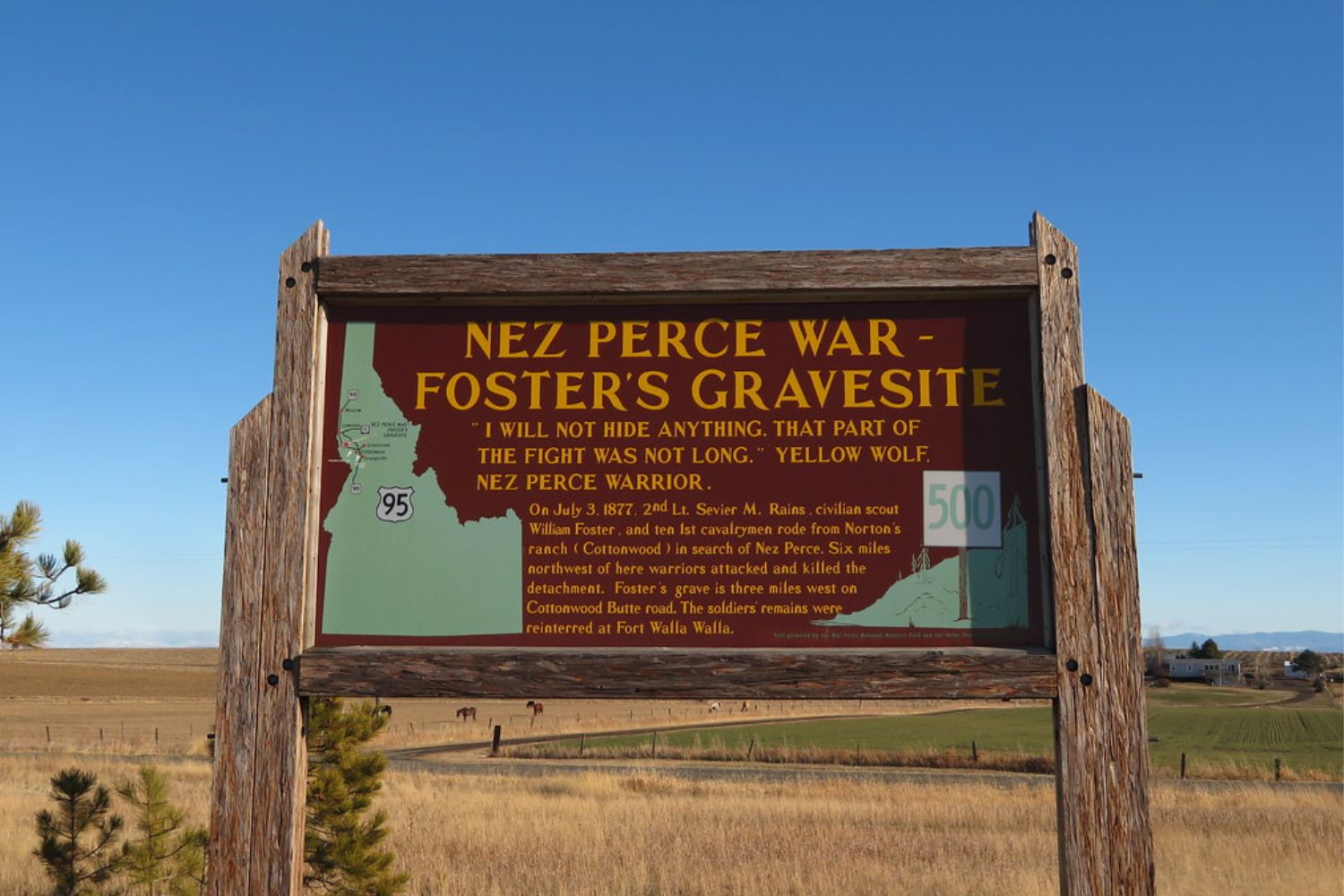Hidden Outposts Of The Nez Perce War

Have you ever wondered about the hidden outposts of the Nez Perce War? This conflict, which took place in 1877, saw the Nez Perce tribe fighting to keep their land and way of life. Many battles and skirmishes happened in remote areas, far from the well-known sites. These lesser-known locations hold stories of bravery, strategy, and survival. Visiting these outposts can give you a deeper understanding of the challenges faced by the Nez Perce people. From rugged mountain passes to secluded valleys, each site offers a unique glimpse into this pivotal moment in history. Ready to uncover these hidden gems? Let's dive in!
Hidden Outposts of the Nez Perce War
The Nez Perce War of 1877 was a significant conflict between the Nez Perce tribe and the United States Army. While many know the major battles, several lesser-known outposts played crucial roles. These hidden spots offer a glimpse into the past, revealing stories of bravery, strategy, and survival.
Outposts in Idaho
Idaho served as a central stage for many events during the Nez Perce War. Several outposts in this region were pivotal in shaping the course of the conflict.
Fort Lapwai: Established in 1862, Fort Lapwai became a key military base during the Nez Perce War. It served as a supply depot and staging area for troops.
White Bird Canyon: The site of the first battle of the Nez Perce War, White Bird Canyon saw the Nez Perce achieve a significant victory against the U.S. Army.
Cottonwood: This small settlement witnessed two skirmishes between the Nez Perce and the U.S. Army. The outpost's strategic location made it a hotspot during the conflict.
Outposts in Montana
Montana's rugged terrain provided both challenges and opportunities for the Nez Perce and the U.S. Army. Several outposts in this state played crucial roles in the war.
Big Hole National Battlefield: This site marks one of the bloodiest battles of the Nez Perce War. The Nez Perce suffered heavy losses but managed to escape the U.S. Army's encirclement.
Fort Fizzle: Named for the failed attempt by the U.S. Army to stop the Nez Perce, Fort Fizzle was an improvised barricade that the Nez Perce easily bypassed.
Bear Paw Battlefield: The final battle of the Nez Perce War took place here. Chief Joseph famously surrendered with the words, "I will fight no more forever."
Outposts in Washington
Washington's landscape provided a backdrop for several key events during the Nez Perce War. The outposts in this region highlight the strategic maneuvers of both sides.
Fort Colville: An important supply depot, Fort Colville played a supporting role in the Nez Perce War. It provided resources and reinforcements to the U.S. Army.
Snake River Crossing: This crossing point was used by the Nez Perce to evade the U.S. Army. Its strategic location made it a critical juncture during the war.
Outposts in Oregon
Oregon's diverse terrain offered both refuge and challenges for the Nez Perce. The outposts in this state reflect the dynamic nature of the conflict.
Wallowa Valley: The ancestral home of the Nez Perce, Wallowa Valley was a place of deep cultural significance. The U.S. Army's attempts to force the Nez Perce out of this valley sparked the war.
Fort Walla Walla: This fort served as a key military base during the Nez Perce War. It provided troops and supplies for the U.S. Army's campaigns.
Outposts in Wyoming
Wyoming's vast landscapes saw the Nez Perce traverse through challenging terrains. The outposts here highlight the endurance and resilience of the Nez Perce.
Yellowstone National Park: The Nez Perce passed through Yellowstone during their flight from the U.S. Army. Their journey through the park is a testament to their determination and resourcefulness.
Clark's Fork: This crossing point was used by the Nez Perce to move between Montana and Wyoming. Its strategic importance made it a key location during the war.
Discovering History's Hidden Corners
Exploring the hidden outposts of the Nez Perce War offers a unique glimpse into a pivotal moment in American history. These sites, often overlooked, hold stories of bravery, strategy, and resilience. Visiting places like White Bird Battlefield, Clearwater Battlefield, and the Big Hole National Battlefield brings history to life. Each location provides a deeper understanding of the Nez Perce people and their struggle during the war.
Traveling to these outposts isn't just about seeing historical sites; it's about connecting with the past. The landscapes, preserved artifacts, and interpretive centers help visitors appreciate the complexities of the conflict. Whether you're a history buff or just curious, these hidden outposts offer a meaningful experience.
Next time you're planning a trip, consider adding these historical sites to your itinerary. You'll walk away with a richer appreciation for the Nez Perce War and its lasting impact.

